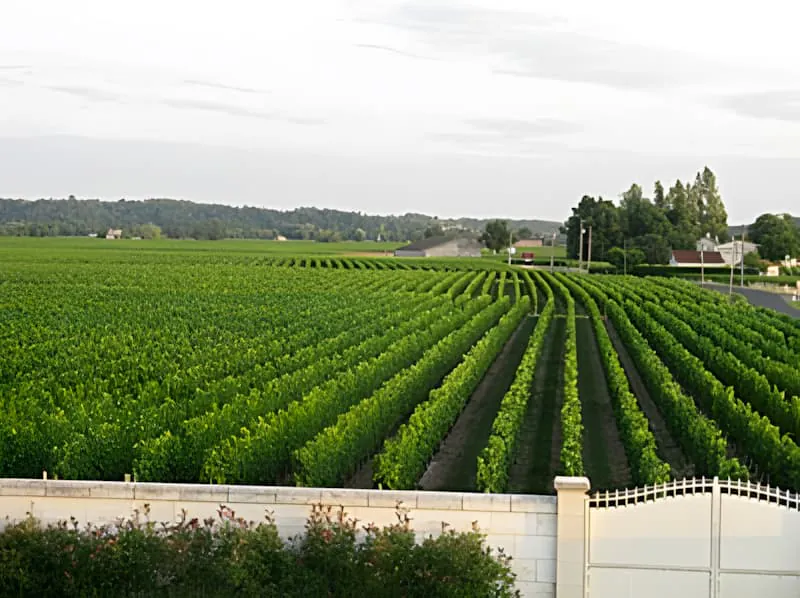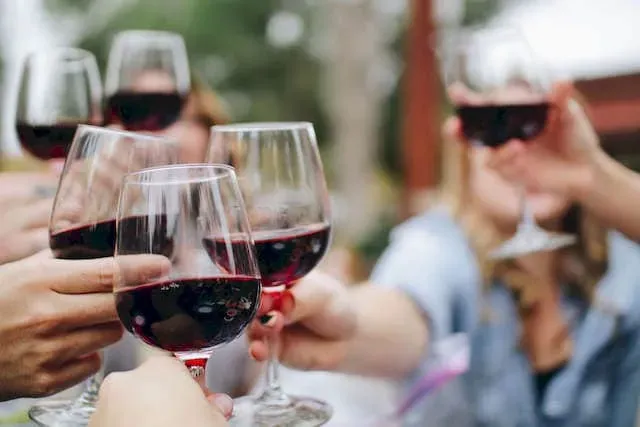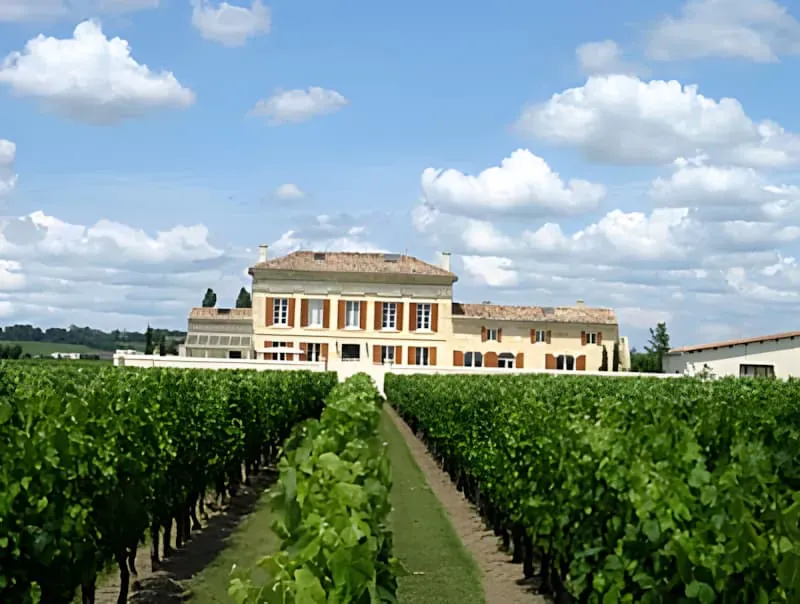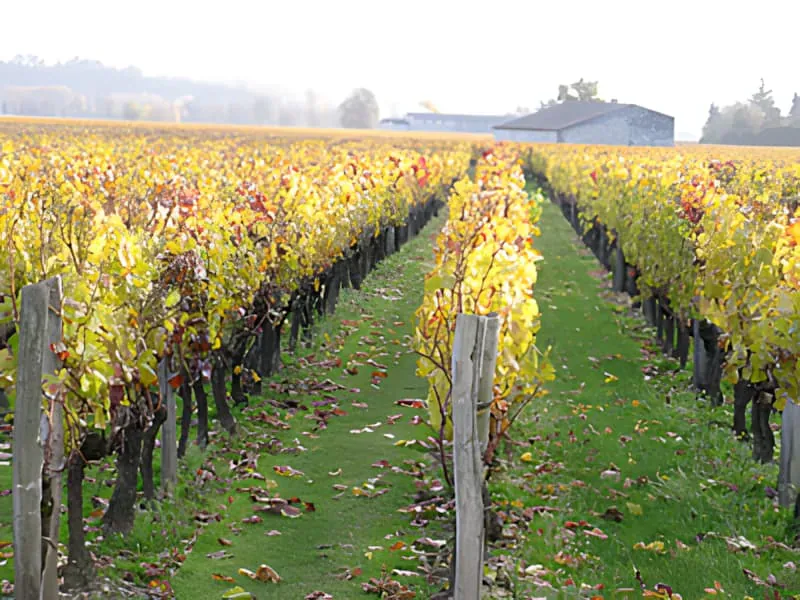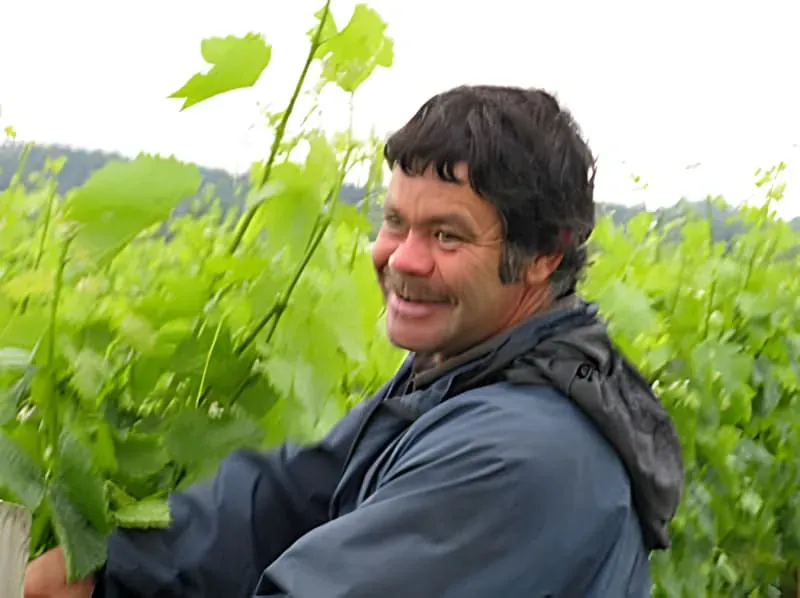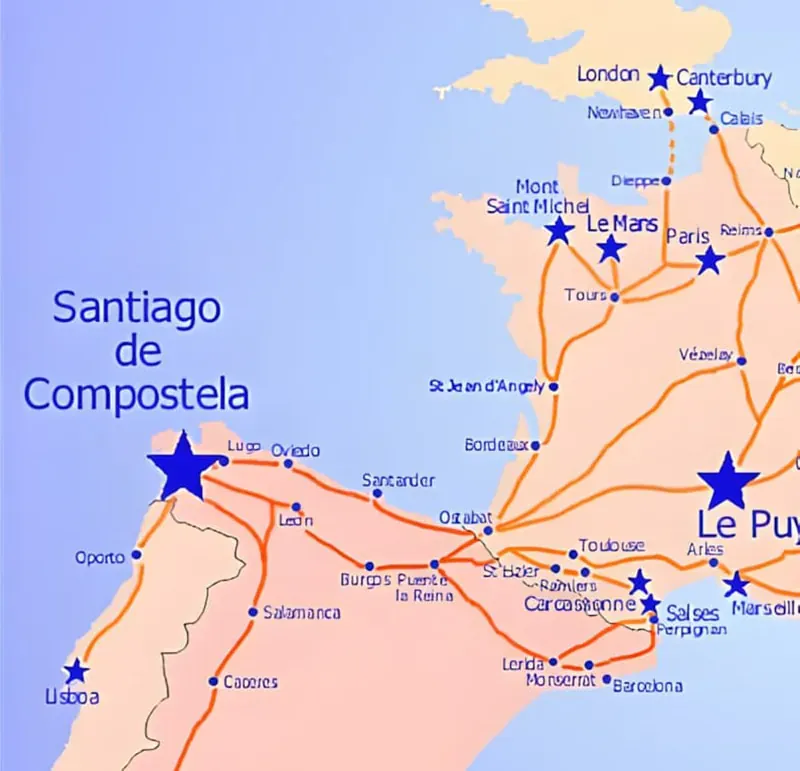Terroir Wine (Terroir is a French term pertaining to the special characteristics such as the microclimate, the geography, the soil, the location, the sun exposure, drainage, altitude, etc.)
Ours is a terroir wine:
Not a single Varietal,
Not a recipe wine,
Not a singular barrel supplier that rubber stamps our order each year,
No controlled watering system in place, no protection permitted in case of hail,
Not machine manufactured,
Not to the glory of any one individual.
Our wine is not that simple.
Each vintage is unique: the weather, the soil types, the micro-climates of each parcel of land, play into the complexity of the wine for any given year.
Our wine is not made of a single Varietal: but a blend of Cabernet Sauvignon, Cabernet Franc and Merlot. Individually, they do not produce a wine as interesting as our blend.
We don’t have a recipe that allows us to add sugar, colour or aromas. Our wines are 100 percent the grapes of that year. The given characteristics of that year are what we showcase.
We age both our Saint Emilion Grand Cru and our Bordeaux Superieur for 12 to 18 months in French Oak Barrels. Depending on the grapes harvested, we order our barrels to accentuate that particular year’s harvest. During aging, the nose and fruit flavours intensify. The French Oak adds the vanilla, toast and a myriad of other subtle notes to the wine.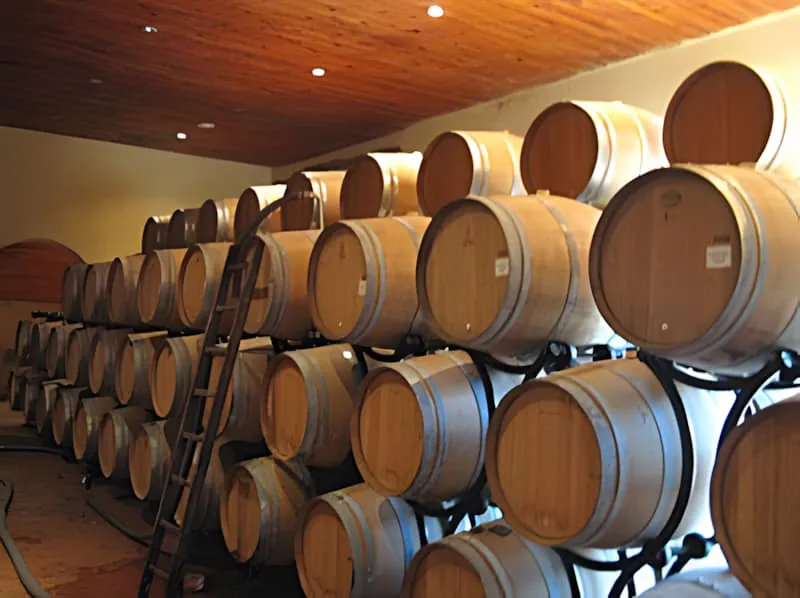
Weather plays into each vintage. As we are not permitted to irrigate or protect our vines from such things as hail, each vintage reflects the weather conditions. When we have hail storms we simply have a smaller harvest. When it extremely hot, such as in 2003 and again in 2011, our wine will be more intense. As we are not a factory, each year is unique.
Our wines will never exceed the quality of the grapes we bring in. It is the meticulous hand-work in the fields that make our wines stand apart. All work is done individually to each vine:
Taillage = Pruning, which sets the entire growing season into motion
Pliage = Bending the main branch to the lower wire and attaching it securely
Levage = Tucking the shoots between the wires, to protect and splay the canopy
Effeuillage = Removing the lower leaves on the side facing the morning sun
Vendange verte = the green harvest, thinning the grapes
For us, one vine will produce one bottle of wine. During the green harvest we decrease the quantity while increasing the quality. 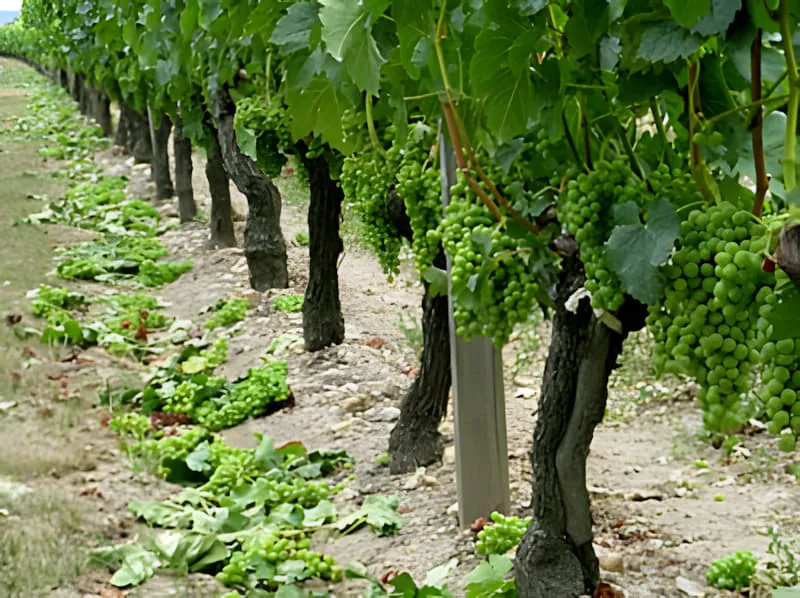 By thinning down each vine to 8 - 10 bunches instead of the 20 -30 it is capable of producing, all the minerals from the soil and the full flavour go into those remaining bunches.
By thinning down each vine to 8 - 10 bunches instead of the 20 -30 it is capable of producing, all the minerals from the soil and the full flavour go into those remaining bunches.
Some vineyards use machines, but we know that the vines and the grapes are often damaged and bruised. The personal touch cannot be duplicated.
The hand harvest is one of the most exciting times at the vineyard. 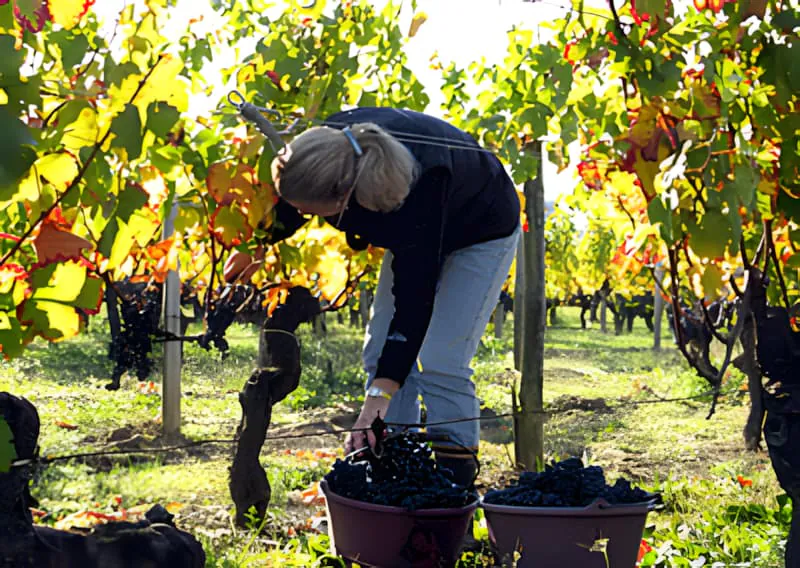 We wait until each field has achieved optimal ripeness. All of us are aware that our careful attention to detail is worth the hours spent working at grape level.
We wait until each field has achieved optimal ripeness. All of us are aware that our careful attention to detail is worth the hours spent working at grape level.
One individual cannot receive all the honour of our wine. Ours is not an ego wine, but a heart wine. Our wine is the result of the passionate efforts of our entire team, the terroir, and the vines themselves.